MEDEX maintains and cultivates a substantial pool of potential sites and preceptors throughout the WWAMI region, and expects students to travel during the clinical phase of their education. Students entering into their clinical year can expect several exciting and educational experiences while rotating through our five-state service region. The clinical year is made up of seven rotations and all students are required to participate in each rotation. The core clinical placement, called the preceptorship, runs for four months in a family medicine environment. The six one-month exposures are known as clerkships. The clerkships are further broken down into the required rotations: behavioral medicine, emergency medicine, surgery, inpatient, and underserved populations; and one elective. Students will either begin the clinical phase with their preceptorship, or it will be their last rotation of the year. There are multiple factors that are taken into consideration when deciding on the order a student completes these rotations.
Students will also continue to work on their
capstone projects during the clinical phase.
var divElement = document.getElementById(‘viz1626650612741’); var vizElement = divElement.getElementsByTagName(‘object’)[0]; vizElement.style.width=’100%’;vizElement.style.height=(divElement.offsetWidth*0.75)+’px’; var scriptElement = document.createElement(‘script’); scriptElement.src = ‘https://public.tableau.com/javascripts/api/viz_v1.js’; vizElement.parentNode.insertBefore(scriptElement, vizElement);
Each quarter of clinical training (Fall, Winter, Spring, Summer) is assigned 19 credits for a total of 76 credits in the clinical year.
Clerkship Descriptions
Family Medicine
Primary care and family medicine lie at the heart of the MEDEX mission. Because of this, we devote a sizable portion of time to this rotation. This preceptorship stresses ambulatory primary care with an emphasis on common problems, biopsychosocial issues, preventive care, and introduction to the role of the primary care medical provider. Students may be placed in community clinics, large systems, stand-alone individual provider offices, and small multi-caregiver practices. During their time in this rotation, they will acquire the skills needed to diagnose and treat their patients using office, hospital, home, or community resources.
Behavioral Medicine
The behavioral medicine experience offers active and observational involvement in either outpatient clinic settings or inpatient treatment facilities. Placement sites include, but are not limited to, state and federal correctional institutions, substance abuse treatment facilities, and large multi-disciplinary medical centers. The clinical student can expect to see an assortment of psychiatric conditions and complaints (e.g., depression, generalized anxiety disorder, post-traumatic stress disorder, dementia, schizophrenia) and can anticipate being a part of patient evaluation and treatment, which will incorporate counseling (inpatient, outpatient, group, family, couple), medical management, assessment, and provider consultation.
Emergency Medicine
During the emergency medicine rotation the clinical student will be exposed to a wide range of patients; those who present with common outpatient problems (e.g., back pain, headache, minor trauma, upper respiratory tract infections, urinary tract infections) along with potentially critical, life-threatening disease or injury requiring quick therapeutic decisions. Upon completing this experience, the student will have the knowledge, experience, and self-confidence necessary to effectively diagnose and manage patients with the wide range of acute and serious illnesses often encountered in their continued training and future practice.
Surgery
The objective of this rotation is to permit clinical students to develop their knowledge of surgical disease and to enhance their ability to comprehensively manage the problems encountered in surgical patients. Diagnosis, preoperative care and postoperative care will be stressed. The management of surgical emergencies and outpatient follow-up of discharged patients will be included. The student will be involved in operative procedures and will participate in rounds and teaching conferences. This rotation will provide an opportunity for students to further develop their clinical skills in dealing with medical as well as surgical problems and will permit them to consider every aspect of the surgical patient, including differential diagnosis and decision-making, and the basic principles of surgical management.
Inpatient
During this rotation, the clinical student will gain the skills required to manage high-acuity medical and surgical patients. They will participate in hospital-based care, refining their history-taking and physical examination skills, diagnostic test interpretation, and treatment protocol comprehension, all while caring for the acutely ill. All students can also expect to participate in daily rounds and training sessions. Other experiences during the inpatient rotation include transport team management, communication with referral physicians, and interaction with a multi-disciplinary team.
Medically Underserved Populations
The underserved rotation is a key focus of the MEDEX program. The goal of this clerkship is to help prepare our future medical providers to care for the vulnerable and underserved populations among us. Students can expect to receive real-world experience while treating patients with a higher risk for poor health outcomes due to an inability to access the necessary resources for optimal health and improved quality of life. They can expect a challenging and rewarding exposure in either a rural or urban underserved system. The clerkship includes all aspects of patient care, from examination to treatment, with the added benefit of understanding how such care is delivered in the underserved healthcare environment.
Elective
Clinical students are given the opportunity to choose a one-month medical experience. While it is necessary for the rotation to be medically and physician assistant focused, what this exposure might be is limited only by a student’s vision and desire. The decision is commonly influenced by future employment or career goals. However, it is not unusual for the student to seek continued exposure in a previously completed core clerkship. Examples of commonly requested electives include orthopedics, cardiology, pulmonary, and trauma surgery.

